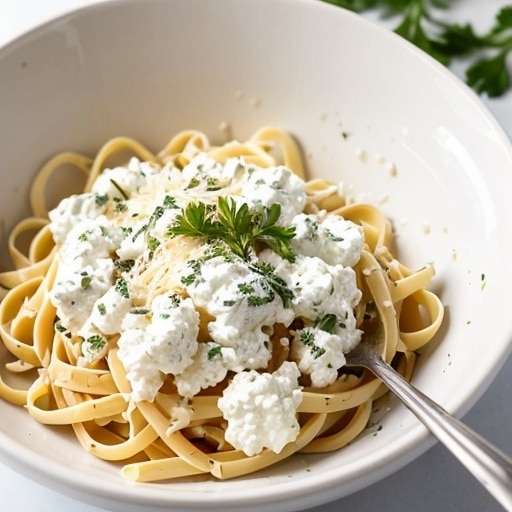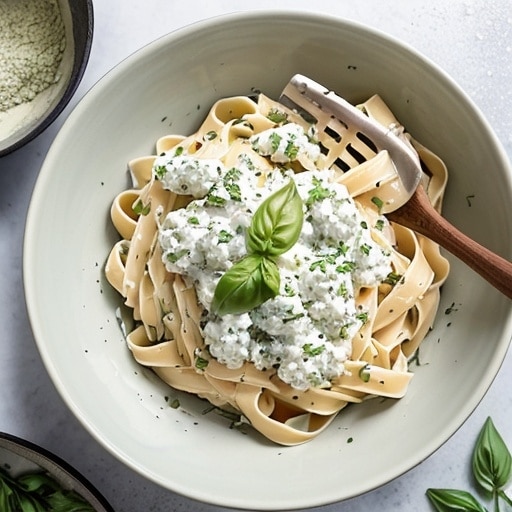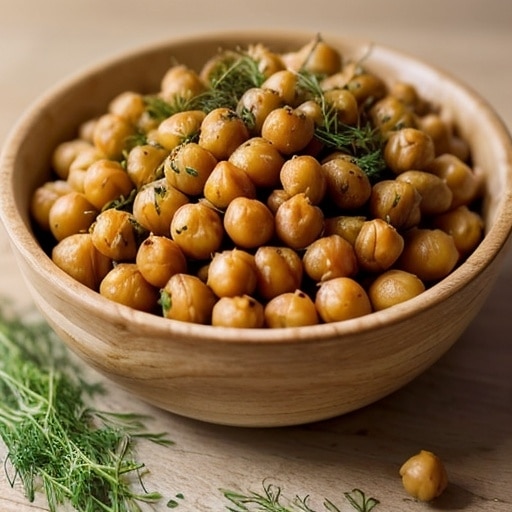Have you ever found yourself rummaging through your fridge, looking for a way to elevate a simple pasta dish? That’s when I stumbled upon cottage cheese as a game-changer. Who knew that this humble ingredient could transform into a rich, creamy pasta sauce? Cottage cheese pasta sauce is not just a clever alternative; it’s a delightful, nutritious option that brings a unique flavor profile to your favorite dishes.
What makes this sauce so special? Not only is it creamy and delicious, but it’s also packed with protein and lower in fat than traditional cream-based sauces. Plus, it’s incredibly versatile. You can customize it with different herbs, spices, and add-ins to suit your taste. Let’s dive into the details of how to create this extraordinary sauce.

Ingredients & Substitutions
Essential Ingredients
- Cottage Cheese: The star of the show. Use low-fat or full-fat based on your preference.
- Pasta: Any kind will work—spaghetti, penne, or even whole wheat for added fiber.
- Garlic: Fresh minced garlic adds aromatic depth.
- Olive Oil: For sautéing; it adds flavor and richness.
- Parmesan Cheese: Freshly grated for that umami kick.
- Spinach: Fresh or frozen, it adds color and nutrients.
- Lemon Juice: Brightens the flavor and balances the richness.
- Salt and Pepper: Essential for seasoning.
- Herbs: Fresh basil or parsley for garnish and flavor.
Quality Substitutions
- Cottage Cheese: If you’re looking for a dairy-free option, try silken tofu blended until smooth.
- Pasta: Gluten-free pasta can be used to cater to dietary restrictions.
- Parmesan: Nutritional yeast can substitute for a vegan, cheesy flavor.
Selecting fresh ingredients is key. Fresh herbs and garlic elevate the dish with vibrant flavors that dried versions can’t match.

Step-by-Step Instructions
Cooking the Pasta
- Boil the Pasta: In a large pot, bring salted water to a boil. Add your pasta and cook according to package instructions until al dente. This usually takes about 8-10 minutes, depending on the type.
- Reserve Pasta Water: Before draining, save about a cup of the pasta cooking water. This starchy liquid is gold for adjusting the sauce later.
Preparing the Sauce
- Sauté Garlic: In a large skillet, heat 2 tablespoons of olive oil over medium heat. Add the minced garlic and sauté until fragrant, about 1 minute. Be careful not to burn it!
- Add Cottage Cheese: Lower the heat and stir in the cottage cheese. Cook for about 2-3 minutes, allowing it to soften and warm through.
Blending the Sauce
- Blend for Creaminess: For a smoother sauce, transfer the cottage cheese mixture to a blender and blend until creamy. If you prefer a chunkier texture, you can skip this step.
- Incorporate Spinach: Stir in the spinach, cooking until wilted. This usually takes about 2 minutes.
Combining Pasta and Sauce
- Mix Pasta and Sauce: Add the drained pasta to the skillet with the cottage cheese sauce. Toss everything together, adding reserved pasta water a little at a time until you reach your desired consistency.
- Season: Add salt, pepper, and lemon juice. Toss again to combine.
Final Touches
- Garnish: Serve the pasta in bowls, topped with freshly grated Parmesan and chopped herbs. A drizzle of olive oil can elevate the dish even more.
Expert Tips
- Avoid Overcooking the Garlic: Burning garlic can create a bitter flavor, so keep an eye on it.
- Common Mistakes: Don’t skip reserving the pasta water. It’s crucial for achieving the right sauce consistency.
Variations
For a spicier kick, add red pepper flakes when sautéing the garlic. Want to sneak in more veggies? Toss in some sautéed mushrooms or bell peppers along with the spinach.
Cooking Techniques & Science
Understanding the cooking methods can enhance your results. The sautéing of garlic in olive oil creates a flavor base that permeates the dish. Blending the cottage cheese creates a creamy texture that mimics traditional cream sauces, but with more protein and fewer calories.
Using the reserved pasta water helps the sauce cling to the pasta better. The starch in the water acts as a binding agent, making every bite flavorful.
Tools You’ll Need
- Large Pot: For boiling pasta.
- Skillet: A large skillet is essential for combining the sauce and pasta.
- Blender: Use this for achieving a creamy sauce if desired.
- Tongs: Perfect for tossing pasta and ensuring even coating with the sauce.
Serving & Pairing Suggestions
Presentation is key to a great meal. Serve the pasta in shallow bowls, garnished with fresh herbs and a sprinkle of Parmesan. Consider a light drizzle of good-quality olive oil for added richness.
Pair this dish with a side salad of mixed greens dressed in a simple vinaigrette. A crisp white wine, like Sauvignon Blanc, complements the creamy sauce beautifully. For a non-alcoholic option, a sparkling water with a splash of lemon is refreshing.
Conclusion
Cottage Cheese Pasta Sauce offers a unique and nutritious twist on traditional pasta dishes. It’s creamy, delicious, and packed with protein, making it a fantastic choice for health-conscious eaters.
Remember, the key to a successful sauce lies in the quality of your ingredients and understanding your cooking techniques. With just a few simple steps, you can create a dish that impresses both family and friends.
Final Tips
- Leftovers: Store any leftover pasta in an airtight container in the fridge. Reheat gently on the stovetop, adding a splash of water or more olive oil to loosen the sauce.
- Experiment: Feel free to customize with different cheeses, proteins, or vegetables. The possibilities are endless.
FAQs
1. Can I use low-fat cottage cheese?
Absolutely! Low-fat cottage cheese works well and still provides a creamy texture.
2. What can I add for extra protein?
Consider adding cooked chicken, shrimp, or even lentils for a vegetarian option.
3. How do I store leftovers?
Keep leftovers in an airtight container in the fridge for up to three days. Reheat gently on the stovetop.
4. Can I freeze the sauce?
Yes! The sauce can be frozen for up to three months. Just thaw and reheat when ready to use.
5. How can I make this dish vegan?
Substitute cottage cheese with blended silken tofu and use a plant-based cheese for topping.

Catherine Frank is the creative force behind FoodieGrandie.com, a cozy corner of the internet where she shares her love for home-cooked meals. From hearty dinners to sweet desserts, her recipes bring warmth and flavor to every table. Passionate about simple, delicious food, Catherine turns everyday meals into memorable moments.



